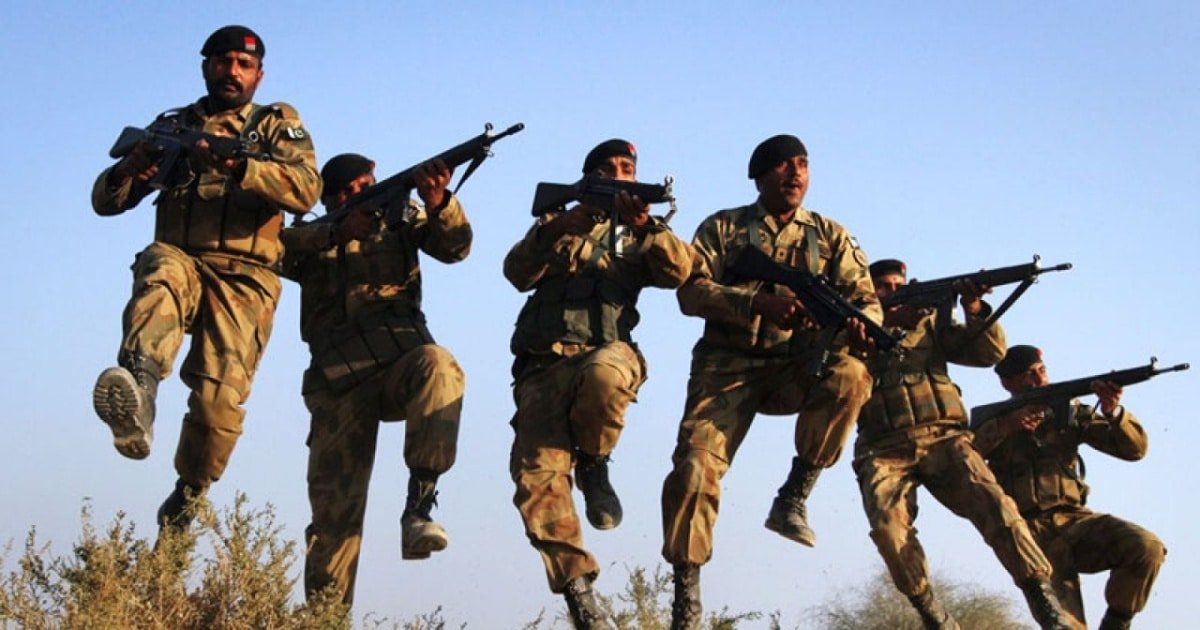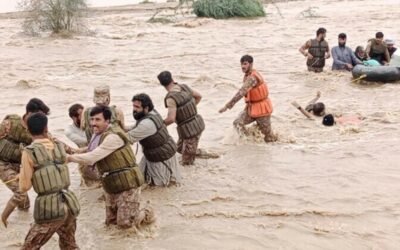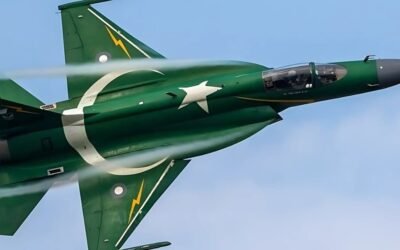Over the past month, Pakistan’s armed forces have run a tightly coordinated sequence of exercises. These ranged from air displays abroad and bilateral naval drills at sea to focused port-defence rehearsals at home. Together, they reflect pragmatic defence diplomacy and marked gains in operational readiness. This was not gratuitous saber-rattling. The July–August 2025 activities show a military balancing three objectives at once. They aim to deter aggression. They aim to sharpen joint warfighting skills. They aim to reassure both international partners and domestic audiences. They show that Pakistan can protect its sovereign interests and maritime approaches.
Projecting Air Power and International Integration
The Pakistan Air Force’s participation in RIAT-2025 in mid-July was far more than a ceremonial fly-past. It sent JF-17 Block-III fighters, a transport aircraft, and an aerial tanker. It was a calculated projection of Pakistan’s ability to sustain long-range deployments. It showed the capacity to operate in unfamiliar environments. It proved readiness to engage with some of the world’s most advanced air forces. Such engagement opens doors to tactical and technological exchanges. It strengthens professional networks. It builds quiet trust that can matter in coalition or humanitarian operations. PAF’s JF-17 Block-III won the “Spirit of the Meet” Trophy at RIAT-2025 for its striking livery and nonstop refueling journey from Pakistan.

Source: X/@PTVNewsOfficial
For Pakistan, this is diplomacy in the skies. It means visibility without provocation. It means outreach without compromise. It means professional integration without losing strategic autonomy. In a region where air dominance can shift political balances, RIAT-2025 sent a clear signal. The PAF can perform well beyond its immediate borders while strengthening its international standing.
Enhancing Naval and Maritime Security Readiness
On 30 July, the Pakistan Navy’s PNS Shamsheer conducted a Passage Exercise (PASSEX) with the USS Fitzgerald in the North Indian Ocean. Bilateral at-sea drills like these are practical confidence-building measures. They fine-tune seamanship, bridge-to-bridge communications, and tactical maneuvers vital for counter-piracy, search-and-rescue, and maritime interdiction missions.
You May Like To Read: How PTV Dramas Shaped Pakistan’s Culture
Strategically, it signals Pakistan’s willingness to cooperate with a wide spectrum of navies, including the United States, on shared maritime interests. In the context of the Arabian Sea’s strategic importance, both for global trade and Pakistan’s economic security, such engagement reinforces Pakistan’s image as a responsible maritime player committed to regional stability.

Source: Dunya News
Domestically, the Navy’s Port Security and Harbour Defence Exercise in early August at Karachi and Port Qasim showcased readiness against non-traditional threats like sabotage, smuggling, and terrorism. Fast-boat interceptions, boarding drills, and integrated surveillance were carried out in coordination with civil authorities. The exercise’s message was clear: Pakistan’s economic arteries, its ports, are defended by a capable, coordinated security network.
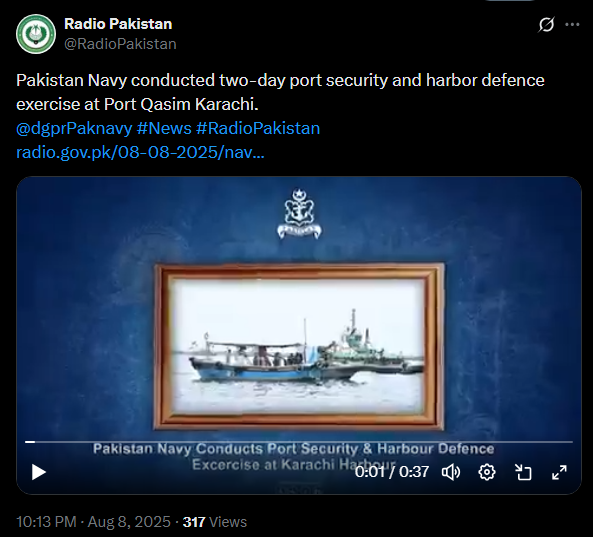
Source: X/@RadioPakistan
Strengthening Counterterrorism Skills and Regional Defence Diplomacy
From 4–9 August 2025, Pakistan and Tajikistan held Joint Counter Terrorism Exercise Dosti-II at Fakhrobod Base, Tajikistan. Two combat teams came from the Pakistan Army’s Light Commando Battalion. Four teams came from the Tajikistan Special Forces. The drills sharpened counterterrorism tactics. They improved urban assault techniques. They refined high-risk target neutralization skills. This was more than an operational training event. It strengthened historic military ties between the two friendly states.
You May Like To Read: Information as a Weapon: How ISI Shapes Perception in War
Defence Colonel Muhammad Muazzam Zafar attended as the Chief Guest from the Pakistan side. Senior Tajik military officials joined him. Their presence gave the exercise strong diplomatic weight. Pakistan met all training goals. It showed itself as professional, adaptable, and cooperative in multinational security settings. Exercises like Dosti-II let Pakistan share hard-earned counterterrorism experience from two decades of high-intensity operations. They also let it learn from partners facing similar threats in Central Asia. This mutual learning builds trust. It also reinforces Pakistan’s role as a stabilizing force beyond South Asia. It also supports a wider, coordinated security network.
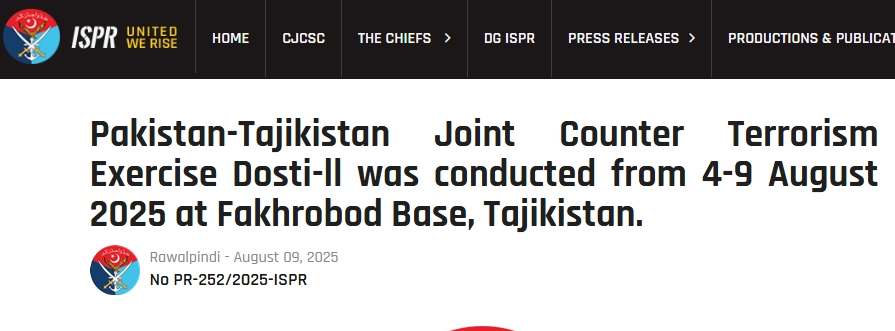
Source: ISPR
Strategic Implications: Balanced Deterrence with Cooperative Engagement
Pakistan’s July-August 2025 exercise program showcases a multi-domain deterrence strategy across air, sea, and land, built on three pillars. The first is credibility, demonstrated through exercises like RIAT-2025, PASSEX, and Dosti-II, which are not just ceremonial parades but actual combat practices. The second is diplomatic reach, as Pakistan connects with partners in the US Navy, Royal Air Force, and Tajikistan Special Forces, broadening its strategic relationships. The third is domestic and economic security, with inter-agency coordination and port-defense drills aimed at safeguarding economic infrastructure and reassuring citizens and investors that the state can protect critical assets.
While opponents often mistake these drills for escalation, Pakistan has been cautious and transparent, maintaining an optimistic, collaborative, and defensive stance that fosters understanding and signals readiness. Moving forward, to stay credible in a world where partnerships and platforms are vital, the armed forces must continue balancing the wise use of power, positive engagement with partners, and strong defense of the homeland.
You May Like To Read: Macron’s September Gesture and the West’s Delayed Guilt
Conclusion
Pakistan’s military activities in July-August 2025 formed a cohesive and strategic set. They included the RIAT air deployment, naval PASSEX, port and harbor defense drills, and the Dosti-II counterterrorism training. These were not superficial displays. They were not aggressive posturing. They were intentional investments in readiness. They built professional credibility. They strengthened regional trust. In a volatile neighborhood, preparedness is not a provocation. It is a duty. Through these exercises, Pakistan’s armed forces demonstrated their ability to uphold that duty. They did so with discipline, professionalism, and foresight.

